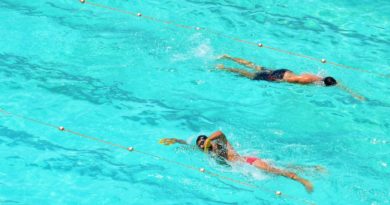Getting Fit in Your 50s and 60s
Introduction: Embracing a Healthier Lifestyle in Your Later Years
Entering your 50s and 60s signifies a significant milestone in life. This period presents an exciting opportunity to relish the fruits of your labor, explore new hobbies, travel to new places, and spend quality time with family and friends. However, as our bodies undergo changes with age, it becomes crucial to take extra care of ourselves. Incorporating exercise into your daily routine is a key way to ensure you stay healthy and active. In this article, we’ll delve into the benefits of fitness for those in their 50s and 60s, suitable exercise types, how to embark on a fitness journey, nutrition tips, and practical workout advice tailored for the 50-plus age group.
The Benefits of Exercise in Your 50s and 60s
Regular exercise in your 50s and 60s brings numerous health benefits. It improves bone density, essential for preventing osteoporosis, and helps maintain muscle mass, reducing the risk of age-related muscle loss. Exercise also aids in preventing chronic diseases such as type II diabetes, heart disease, and high blood pressure, while controlling natural weight gain during this period. Additionally, it enhances mental health, reduces stress, promotes better sleep, and supports the immune system, crucial for overall well-being.
Furthermore, exercise improves balance and coordination, essential for avoiding falls that may lead to injuries, especially for those with mobility issues due to age.
The Best Types of Exercise for People in Their 50s and 60s
As the body undergoes changes with age, choosing appropriate exercises is crucial. Some of the best types of exercise for those in their 50s and 60s include:
- Aerobic Exercise: Gentle forms of cardio like walking, jogging, cycling, or swimming improve heart health without straining joints.
- Strength Training: Using resistance bands or light weights helps maintain muscle mass without excessive stress on bones and joints.
- Flexibility Exercises: Yoga or stretching keeps joints supple and prevents stiffness, promoting relaxation and stress reduction.
- Balance Exercises: Activities like Tai Chi improve stability, reducing the risk of falls.
Incorporating a variety of exercises into your routine is essential to stay fit as you age. Choose activities that match your fitness level and preferences, ensuring a balance of cardiovascular, strength, and flexibility exercises.
How to Get Started with Exercise in Your 50s and 60s
Embarking on an exercise journey in your 50s and 60s may seem challenging, but it’s never too late to start. Before beginning any workout routine, consult with a doctor to ensure you’re healthy enough for physical activity. Once approved, start gradually with low-impact activities like walking or swimming. Set realistic goals, make a plan, and gradually increase intensity and duration over time. Finding enjoyable exercises and considering fitness classes or working out with a friend can make the process more enjoyable and social. Remember to rest, listen to your body, and seek guidance from medical professionals for a successful fitness journey.
The Importance of Diet in Getting Fit in Your 50s and 60s
A balanced and nutritious diet is crucial in your 50s and 60s as metabolism slows down. Focus on fruits, vegetables, lean proteins, and whole grains while avoiding processed foods high in sugar and salt. Staying hydrated is essential for flushing toxins and maintaining joint mobility during exercises. Consult a registered dietitian for personalized nutrition plans, recognizing that proper nutrition is key for any fitness journey at any age.
Fitness Tips for People in Their 50s and 60s
- Start small and gradually increase intensity over time to avoid injury.
- Incorporate strength training into your routine at least twice a week to maintain muscle mass.
- Stay hydrated before, during, and after exercise, as aging bodies may have a harder time regulating body temperature.
- Vary your workouts for optimal results; try cycling or dancing classes on alternate days to keep things interesting.
- Prioritize stretching before any activity to improve flexibility and reduce the risk of injury.
By following these fitness tips and adopting healthy eating habits, vibrant physical and mental well-being is achievable throughout your later years.
Conclusion: Achieving Fitness Goals in Your Later Years
Getting fit in your 50s and 60s is attainable with the right mindset, exercise routine, and diet plan. Taking care of your body becomes increasingly important as you age, contributing to a higher quality of life. Incorporate gentle exercises into your routine, along with strength training and proper nutrition, to stay active and healthy for years to come. Listen to your body, start slow, and consult healthcare professionals before making significant changes. With dedication, achieving fitness goals at any age is possible. So, whether it’s lacing up those sneakers or grabbing that yoga mat, it’s never too late to embark on the path towards better health!





